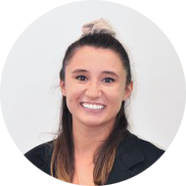


«Like many others in these times, the journey materializes recently, catalyzed by the reaction to a quite hard 2020, as a necessity to develop an existential autonomy regarding everything else. As research of a dimension that ignores entirely the hardships and problems of day-to-day life. The very definition of "problem" cannot exist in the sacred dimension (meant as separate) where art resides. The esthetical elements that tie up the journey are the sign, the symbol, and the composition. The attention given to technique is set aside to make room for the spontaneity of the gesture, the resulting composition is an iterative process founded on mistakes; a mistake is everything that forces to break out from drawing exercise and allows access to unknown territories. The goal of the research is the research; to draw better and embrace the failure that fuels it».
«I like making opposites work together, working with dualisms: black and white, classic art and illustrations, figurative and abstract, classic references and pop. Not trying to make it a statement: It’s not the distance between two opposing elements that define the message. There is no message. Trying to send a message is limiting and superfluous, this dimension is detached from ideas. The common characteristic classic art and manga share is that they both reside in a dimension outside of the daily, the social, the material, and both transport to a space free from conditioning, expectations, and needs. Moreover, they’re elements transversely recognizable and make up the first reference point for those looking at the drawing»
The digital world, while evolving fast, is still at baby steps; the technological rise has been so disruptive that we rarely judge it for its age. The same society transposed to the digital world is the worst version of itself, and one could say the same things for graphic arts. Usually, digital representations don’t catch my interest. The “binary” approach of and to technology does not seem to respect the “sacred” space of art but is a new medium and it must be explored without entrenching ourselves in romanticism. It’s a real environment to be inhabited. I’m exploring the NFT way with a platform that makes use of this technology as a mean to protect creators, instead of as a speculative financial tool. I don’t love digital art, but you cannot make “research” and later place ideological borders on it.
I’m moving to Africa for some years. I will keep working on the project keeping the medium that defines the work done so far, namely, charcoal, ink, and acrylic spray on paper. It is possible that a new context will add new perspectives to the project. I will continue collaborating with some realities that invest in emerging characters in Trieste, Venice, and New York. We’re working on an exhibition in New York in 2023. It mainly revolves around drawing with the necessary focus and lightness, welcoming every opportunity that this road gives us.

|
This website uses third party cookies | X |
 This site uses anonymous technical cookies to ensure navigation and third-party cookies to monitor traffic and to offer additional services such as viewing videos or messaging systems. Without third-party cookies some pages may not work properly. Third-party cookies can track your activity and will only be installed by clicking on the "Accept all cookies" button. You can change your selection at any time by clicking on the "Cookie" link on each page at the bottom left. By clicking on one of the two buttons you declare that you have read the privacy policy and to accept the conditions.
This site uses anonymous technical cookies to ensure navigation and third-party cookies to monitor traffic and to offer additional services such as viewing videos or messaging systems. Without third-party cookies some pages may not work properly. Third-party cookies can track your activity and will only be installed by clicking on the "Accept all cookies" button. You can change your selection at any time by clicking on the "Cookie" link on each page at the bottom left. By clicking on one of the two buttons you declare that you have read the privacy policy and to accept the conditions.
| |
|